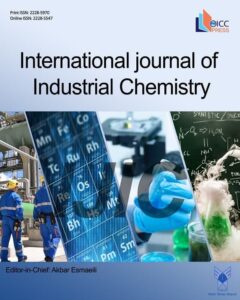Direct catalytic oxidation and removal of NO in flue gas by the micro bubbles gas–liquid dispersion system
Authors
- Hongrui Sun 1
- Guanghui Yang 1
- Tallal Bin Aftab 1
- Fei Xue 1
- Zhengguo Xiao 1
- Qihao Guo 1
- Dengxin Li * 1
Abstract
The method of micro bubbles is widely applied in the fields of water and soil treatment. A novel treatment method of NO in flue gas through a gas–liquid two-phase system formed by micro bubbles is proposed in this study. The system depends on the generation of hydroxyl radicals. The NO removal performance of the micro gas–liquid dispersion system induced by catalysts and O3 was explored and the reaction pathways were elucidated. Micro bubbles, Fe2+, and Mn2+ in solution improved NO removal performance significantly. Salinity and surfactants affected the removal performance of NO by altering micro bubbles. In the presence of Fe2+, the NO removal rate reached 65.2% at pH 5, 75.8% under 0.5 g/L NaCl and 82.1% under 6 mg/L sodium dodecyl sulfate. In the presence of Mn2+, the NO removal rate reached 69.2% at pH 5, 83.2% under 0.5 g/L NaCl and 92.3% under 6 mg/L sodium dodecyl sulfate. However, in the presence of both Mn2+ and Fe2+, NO conversion rate was 93.2%. The NO removal rate in the presence of O3 was further improved under the same conditions. The study provides the basis for the application and development of micro bubbles in flue gas treatments for NO removal. The results can help to solve the problems of high operating cost, large oxidant consumption, secondary pollution, and high energy consumption in traditional NO removal methods.



